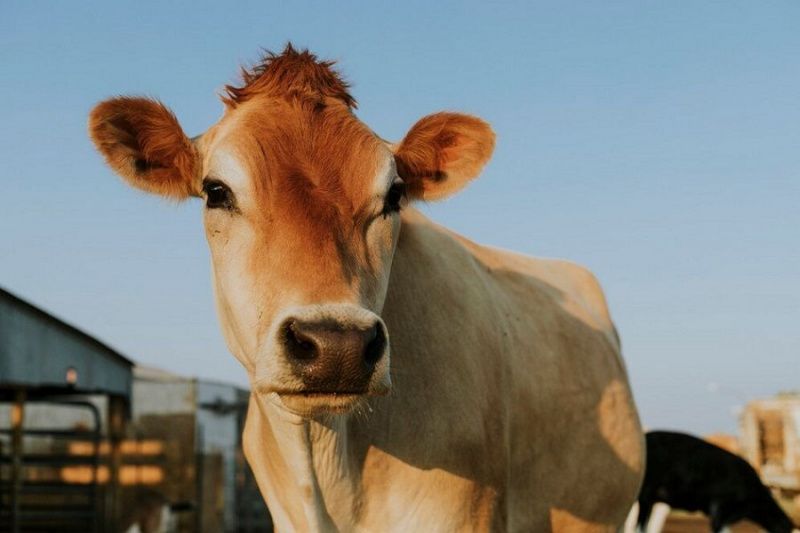USDA Releases Recent H5N1 Avian Flu Sequences Amidst Dairy Herd Outbreaks
Sourse: The DairyNews
The US Department of Agriculture's Animal and Plant Health Inspection Service (APHIS) revealed last night that it has disseminated 239 recent genetic sequences of the H5N1 avian flu virus obtained from poultry, wild birds, and dairy cows. These sequences aim to provide vital insights into the virus's transmission patterns.

In parallel developments over the past three days, APHIS documented four additional H5N1 detections in dairy herds, along with further positive cases in wild birds and poultry. Additionally, the Centers for Disease Control and Prevention (CDC) issued an update on its ongoing efforts to monitor potential human infections.
Anticipation Surrounding Genetic Sequences
As the outbreak approaches its one-month mark, questions persist regarding the emergence of the 2.3.4.4b H5N1 clade and its ability to infect cows. Veterinary experts worldwide are eager to understand the dynamics of its spread to safeguard both bovine and human health.
Concerns have been raised regarding the sluggish pace of sharing genetic sequences and investigative details. Until recently, only a handful of genetic sequences were available, including those from cows and cats detailed in a preprint paper from Iowa State University.
APHIS announced that it has shared raw sequence data via the National Institutes of Health National Center for Biotechnology Information to enhance transparency and expedite research. These sequences encompass various animal species and will be continuously updated.
Challenges Ahead in Analysis
While the release of raw genetic sequencing has been welcomed, Dr. Louise Moncla of the University of Pennsylvania School of Veterinary Medicine cautioned that the analysis process, including data downloading and mapping, will be time-consuming. It will take considerable effort before scientists can establish relationships between different virus strains.
Detections Persist Across Multiple Species
In recent updates, APHIS disclosed four additional H5N1 detections in dairy herds, bringing the total to 32. The latest cases involve cows from Kansas, Michigan, and Texas. Furthermore, two more H5N1 detections were reported in poultry flocks, alongside around 30 new positive cases in wild birds, predominantly in the eastern United States.
Antiviral Susceptibility and Vaccine Development
The CDC confirmed that the H5N1 virus from a recent human case in Texas remains susceptible to all commercially available neuraminidase inhibitors. However, testing to confirm susceptibility to baloxavir marboxil is ongoing. Efforts are also underway to validate existing candidate vaccine viruses against the H5N1 strain identified in the Texas patient.
In addition to these measures, the CDC is initiating an epidemiologic field study to gain deeper insights into the outbreak. Thus far, surveillance data from emergency departments and flu testing in affected areas show no significant deviations.
Anticipation Surrounding Genetic Sequences
As the outbreak approaches its one-month mark, questions persist regarding the emergence of the 2.3.4.4b H5N1 clade and its ability to infect cows. Veterinary experts worldwide are eager to understand the dynamics of its spread to safeguard both bovine and human health.
Concerns have been raised regarding the sluggish pace of sharing genetic sequences and investigative details. Until recently, only a handful of genetic sequences were available, including those from cows and cats detailed in a preprint paper from Iowa State University.
APHIS announced that it has shared raw sequence data via the National Institutes of Health National Center for Biotechnology Information to enhance transparency and expedite research. These sequences encompass various animal species and will be continuously updated.
Challenges Ahead in Analysis
While the release of raw genetic sequencing has been welcomed, Dr. Louise Moncla of the University of Pennsylvania School of Veterinary Medicine cautioned that the analysis process, including data downloading and mapping, will be time-consuming. It will take considerable effort before scientists can establish relationships between different virus strains.
Detections Persist Across Multiple Species
In recent updates, APHIS disclosed four additional H5N1 detections in dairy herds, bringing the total to 32. The latest cases involve cows from Kansas, Michigan, and Texas. Furthermore, two more H5N1 detections were reported in poultry flocks, alongside around 30 new positive cases in wild birds, predominantly in the eastern United States.
Antiviral Susceptibility and Vaccine Development
The CDC confirmed that the H5N1 virus from a recent human case in Texas remains susceptible to all commercially available neuraminidase inhibitors. However, testing to confirm susceptibility to baloxavir marboxil is ongoing. Efforts are also underway to validate existing candidate vaccine viruses against the H5N1 strain identified in the Texas patient.
In addition to these measures, the CDC is initiating an epidemiologic field study to gain deeper insights into the outbreak. Thus far, surveillance data from emergency departments and flu testing in affected areas show no significant deviations.
Key News of the Week











